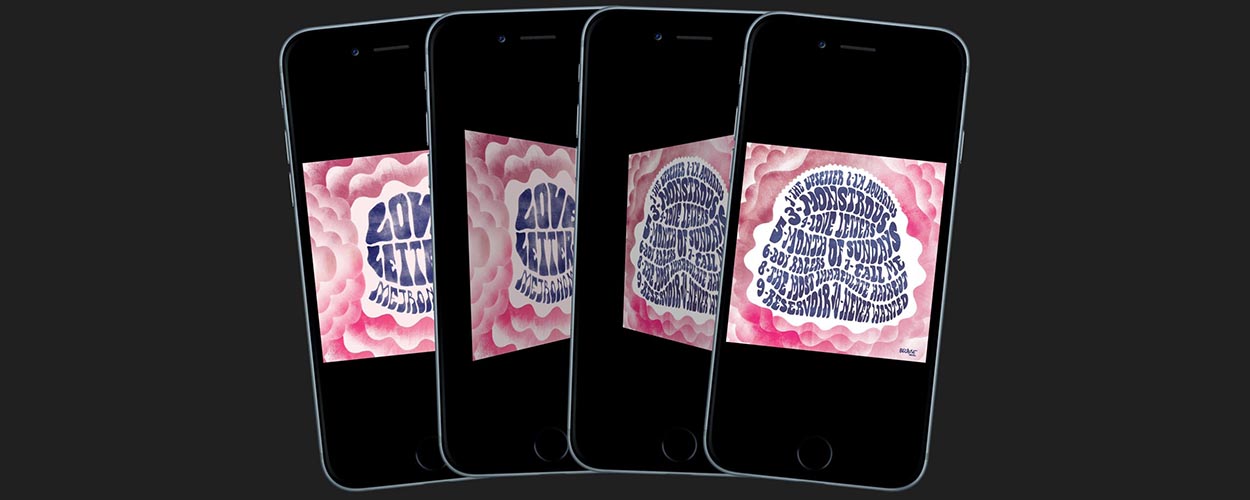This website uses cookies so that we can provide you with the best user experience possible. Cookie information is stored in your browser and performs functions such as recognising you when you return to our website and helping our team to understand which sections of the website you find most interesting and useful.
Business Interviews
Q&A: Tom Vek, Sleevenote
By Andy Malt | Published on Wednesday 18 May 2016

Digital music app Sleevenote is putting artwork up front, describing itself as a ‘post-discovery’ app to improve people’s engagement with albums already in their digital music libraries.
Designed by musician Tom Vek, the app now has over 1000 specially formatted album sleeves in its database, providing both the original cover art and rear tracklist, with plans to include full liner notes. Currently available for iTunes and Apple Music, albums not yet with back covers can still be played and artwork can be requested, which is added daily.
CMU’s Andy Malt spoke to Vek about the app, and how he feels the record industry could better present music to fans in the digital age, and therefore improve their engagement long term.
AM: What prompted you to set up Sleevenote?
TV: I was designing the packaging for my second album [‘Leisure Seizure’] in 2011 and realised that there would be people buying the album digitally who wouldn’t be seeing this extra cool stuff I was adding to the experience. Packaging was always what made albums real rather than just demos to me.
AM: What were some of the challenges in getting it off the ground?
TV: I was very lucky to find a talented developer who understood the nuances of the app interaction as well as building a robust back-end. Once all the work was done building, spreading the word and populating the database have gone hand-in-hand but are chicken and egg. The shifting industry is giving labels so much to think about, you can tell how hard everyone is working, and I’m there trying to give them an extra thing to think about. But I hope they have the time to see this could have a very positive long-term impact on the perceived value of music, albums in particular.
AM: What’s the significance of passing 1000 album sleeves in your database?
TV: It’s felt tangible in the sense that most people who discover the app now have at least a few albums [in their personal digital music library] with full sleeve artwork, so they can imagine how great it would be to have their whole collection supported, and encourages the requests [through the app for other sleeves] I think. Ultimately I like to think that it’s made several times that amount of people happy and dote over an album they love. It’s been quite a bit of work but I totally love doing it – looking at music artwork all day – I wouldn’t have got this far if I wasn’t totally devoted to it.
AM: Do you feel that artwork is being overlooked in digital music?
TV: Yes absolutely, I’ve been pretty shocked how poorly treated the album as a package has been. I think I expected Apple with their tasteful approach to most things to have done it better, perhaps originally with iTunes, or even had a better understanding of the need for accessible formatting with iTunes LP – all these chances to differentiate “owned” music as streaming has grown.
I feel like it’s late, but will never be too late to create a compelling digital format that makes something feel more owned, even emotionally more so than literally. I say this freely – the vinyl revival should make digital music feel ashamed of itself. That’s our benchmark, it needs to be better than vinyl.
AM: Why should people care about artwork on digital releases?
TV: I think when it comes to persuading people to pay for digital products the “stick” or the “guilt-trip” approach often doesn’t work, and that applies to music products too. I’m not going to stand here and say that people should care after all the “boo-hoo” PR disasters, like the Tidal launch. I’d rather build the format, show it to people and them say “cool!”
I know why people will like it because it’s a compelling, considered, laboured-over companion experience created when the artists themselves are most excited about their own creation, I know this first-hand. I also know that there is a massive amount of it out there ready to be presented on this brilliant immersive platform that is the personal device, I always get excited about that.
What makes it good is the blank-canvas nature of traditional packaging, as opposed to conforming for supposed “usability”. The industry is obsessed with discovery right now, but there are literally no other products for “post-discovery” – products that help fans really get deep into a record, which gives the most rewarding experience and forges the strongest bonds and devotion from fans.
AM: How do you see Sleevenote growing?
TV: The idea was to build a robust foundation for including artwork but giving music control – ie playing the song – the priority it needs, hence starting with interactive back cover tracklist art. It will mainly grow by getting support from labels, supplying artwork as well as promoting the format, and it will also need support itself so I’m looking out for anyone who sees the potential in growing a great digital music product.
The next stage is definitely getting digital booklets in, which will be fairly easy. Adding links to credits and label information is a way that these areas can be pushed into the information age.
The vision I have for the ultimate incarnation of Sleevenote is the idea I had at the very start – a stand alone double-sided square “virtual vinyl” sleeve that sits pride of place next to a hi-fi system in the home of the future.
Download Sleevenote and browse the artwork database here.





